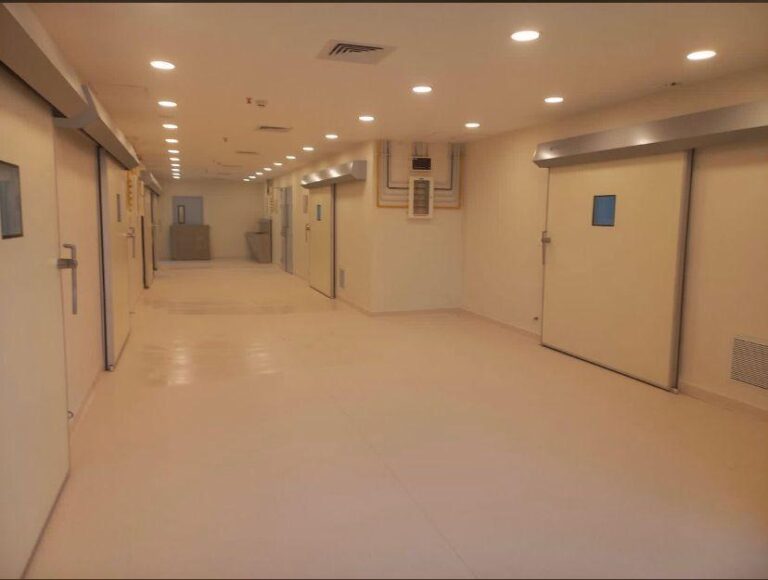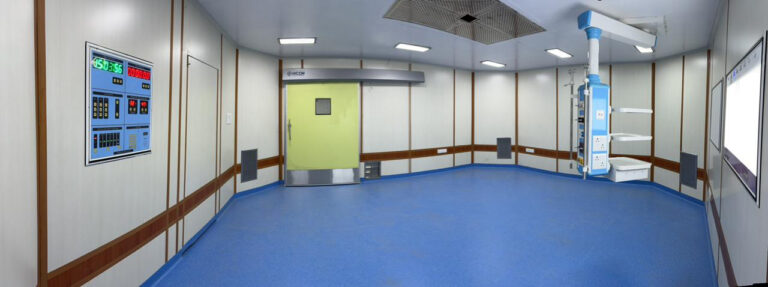In modern healthcare facilities, diagnostic imaging plays a crucial role in diagnosing and monitoring patients’ health. From X-rays to CT scans, these diagnostic procedures are essential tools that help doctors make accurate diagnoses. However, with the increasing use of radiology, the safety of both patients and medical staff has become a significant concern. One effective way to ensure safety within diagnostic imaging rooms is by installing anti-radiation doors.
Anti-radiation doors are specialized barriers designed to shield individuals from harmful radiation exposure. These doors are constructed using lead or other radiation-resistant materials and are specifically engineered for environments where radiation is present. When installed in diagnostic imaging rooms, anti-radiation doors offer several benefits that enhance the safety and functionality of these spaces. Here are some of the key benefits of installing anti-radiation doors in diagnostic imaging rooms:
1. Protection from Harmful Radiation
The most significant advantage of installing anti-radiation doors is their ability to protect people from harmful radiation. In diagnostic imaging rooms, particularly in areas where X-rays and CT scans are performed, radiation exposure is a concern for both medical staff and patients. Without proper shielding, prolonged exposure can lead to serious health risks, including cancer. Anti-radiation doors help mitigate these risks by preventing the escape of radiation from the imaging room. These doors provide an essential protective barrier, allowing medical professionals to safely perform diagnostic procedures without worrying about radiation exposure.
2. Enhanced Safety for Medical Staff
Radiology departments often involve personnel who work in close proximity to imaging equipment. Without sufficient protection, these workers could be exposed to dangerous levels of radiation over time. Anti-radiation doors are designed to block harmful radiation from escaping the diagnostic imaging room, thus ensuring the safety of doctors, radiologists, and technicians. These doors help maintain a safe working environment by providing an effective shield against radiation, reducing the risks of chronic health issues caused by prolonged exposure.
3. Patient Safety and Comfort
The safety of patients undergoing diagnostic imaging procedures is also a priority. Anti-radiation doors help ensure that radiation is confined within the imaging room, preventing any unnecessary exposure to patients in adjacent areas. Moreover, these doors contribute to the overall comfort and confidence of patients, knowing that the facility is equipped with high-quality safety measures. The installation of anti-radiation doors enhances the reputation of the healthcare facility, showing that patient safety is a top priority.
4. Compliance with Health and Safety Standards
Healthcare facilities are required to comply with various health and safety standards to ensure the protection of patients and medical staff. Many regulatory bodies set strict guidelines regarding radiation safety in medical environments. Anti-radiation doors help medical facilities comply with these standards by providing a reliable means of containing radiation within the diagnostic imaging room. Installing these doors demonstrates a commitment to meeting regulatory requirements and provides peace of mind for both healthcare providers and patients.
5. Minimizing Radiation Leakage
Radiation leakage is a serious concern in diagnostic imaging rooms. Even a small amount of radiation leaking from the room can pose significant risks to both staff and patients. Anti-radiation doors are specifically designed to prevent such leaks, effectively containing radiation within the imaging room. These doors are made from materials that are capable of absorbing or deflecting radiation, ensuring that no harmful radiation escapes into surrounding areas. This contributes to a safer environment and reduces the chances of radiation exposure for individuals outside the imaging room.
6. Durability and Longevity
Anti-radiation doors are built to last. These doors are made from high-quality materials such as lead-lined steel, which are durable and resistant to wear and tear. The durability of anti-radiation doors ensures that they will continue to perform effectively over time, providing long-lasting protection from radiation. These doors require minimal maintenance, making them a cost-effective solution for healthcare facilities.
7. Improved Room Insulation and Soundproofing
In addition to their radiation protection capabilities, many anti-radiation doors also provide excellent soundproofing and thermal insulation. Diagnostic imaging rooms often require a quiet environment to ensure that procedures are not disturbed. Anti-radiation doors help maintain a controlled environment by minimizing noise and preventing sound from escaping the room. Additionally, these doors help to maintain the temperature inside the imaging room, providing comfort for patients and medical staff alike.
Conclusion
Installing anti-radiation doors in diagnostic imaging rooms is an essential step in ensuring the safety of both medical staff and patients. These doors provide crucial protection from harmful radiation, minimize exposure risks, and help healthcare facilities comply with safety regulations. They also offer added benefits such as soundproofing, thermal insulation, and durability, making them a valuable investment for any healthcare facility. For healthcare providers looking to enhance safety, improve patient comfort, and meet regulatory requirements, installing anti-radiation doors is a wise and necessary choice.
HIKOM International LLP specializes in providing high-quality anti-radiation doors that are designed to meet the highest safety standards. Contact us today to learn more about our solutions for diagnostic imaging rooms and how they can enhance your facility’s safety and functionality.


